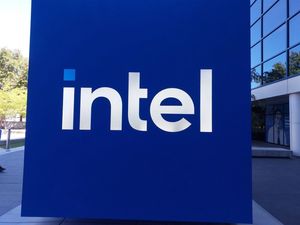Financial News
Is the AI Bubble About to Burst? Investors Flee to Safety with Berkshire Hathaway

As September 25, 2025, dawns, a palpable tension hangs over the financial markets. Whispers of an "AI bubble" have grown into a chorus of concern, driving a noticeable shift in investor sentiment. Fuelled by exorbitant valuations, disappointing returns on massive AI investments, and a growing sense of déjà vu reminiscent of the dot-com era, many are now seeking refuge in traditionally "safer" havens. This flight to quality is prominently featuring Berkshire Hathaway (NYSE: BRK.A, NYSE: BRK.B), Warren Buffett's conglomerate, as investors eye its diversified portfolio and substantial cash reserves as a bulwark against potential market volatility.
The current market environment is characterized by a significant re-evaluation of growth versus value. While the promise of artificial intelligence continues to drive innovation and capture headlines, the financial underpinnings of many AI ventures are increasingly scrutinized. This cautious stance is pushing capital away from high-flying tech stocks and towards established companies with robust balance sheets, signaling a potential cooling off period for the red-hot AI sector and a renewed appreciation for fundamental value.
The AI Mania: A Closer Look at Bubble Fears and the Flight to Value
The unease surrounding an "AI bubble" has been steadily building throughout 2025, reaching a crescendo in recent months. Specific details fueling this apprehension include several high-profile deals and expert warnings. For instance, Oracle's (NYSE: ORCL) reported $300 billion agreement with OpenAI has raised eyebrows, with analysts pointing out the stark contrast between OpenAI's actual revenue and the staggering contract value. This kind of deal, critics argue, smacks of speculative excess rather than sound investment.
Further intensifying these fears are studies revealing a high failure rate for AI projects. A recent MIT study indicated that a staggering 95% of AI pilot projects fail to yield meaningful results, despite over $40 billion in generative AI investment. Even OpenAI CEO Sam Altman has acknowledged the possibility of a bubble in the private AI market, urging investors to exercise caution. Concerns about "circular deals," where major players like NVIDIA (NASDAQ: NVDA) might invest heavily in AI startups while simultaneously supplying them with chips, echo the self-reinforcing market dynamics seen during the 1998-1999 tech boom. Reddit forums, particularly r/singularity and r/Economics, have become hotbeds for these discussions, with users frequently debating whether the current AI boom mirrors the dot-com bubble, and if the "mania phase" is still to come or already upon us. The enormous capital being poured into chips, data centers, and AI startups—trillions by some estimates—is also under scrutiny, with doubts about whether these massive infrastructure projects will fully materialize or lead to significant write-offs as technology rapidly evolves.
Amidst these growing anxieties, the concept of "safer stocks" has gained immense traction. Berkshire Hathaway (NYSE: BRK.A, NYSE: BRK.B) stands out as a prime example. The conglomerate, known for its disciplined investment approach, is widely regarded as a robust defensive play and a "safe harbor" during market corrections. Its appeal stems from a highly diversified and profitable portfolio spanning insurance, energy, manufacturing, and consumer goods, coupled with a substantial cash pile. As of mid-2025, Berkshire Hathaway reportedly held between $300 billion and $347 billion in cash and short-term investments, providing unparalleled financial flexibility and a significant buffer against market volatility. This strategic cash position not only helps the company weather downturns but also positions it to acquire undervalued assets when market conditions become more favorable. Berkshire's consistent outperformance against the S&P 500 over the past decade and its resilience during a 2025 market selloff further solidify its reputation as a preferred choice for risk-averse investors.
Navigating the Volatility: Winners and Losers in a Shifting Landscape
The potential bursting of an "AI bubble" would undoubtedly create distinct winners and losers in the market. Companies heavily invested in and valued primarily for their AI prospects stand to lose the most. This includes many of the high-growth technology firms that have seen their valuations soar on the back of AI enthusiasm. Examples of companies often categorized as "AI stocks" include chipmakers like NVIDIA (NASDAQ: NVDA), which has been a primary beneficiary of the demand for AI hardware, and software giants such as Microsoft (NASDAQ: MSFT) and Alphabet (NASDAQ: GOOGL), which are deeply integrated into the AI ecosystem. If investor confidence in the immediate profitability and scalability of AI applications wanes, these companies could face significant corrections in their stock prices, particularly those with stretched valuations not yet justified by tangible, consistent earnings directly from AI.
Conversely, companies offering stability, strong fundamentals, and a diversified revenue stream are poised to benefit from a flight to safety. Berkshire Hathaway (NYSE: BRK.A, NYSE: BRK.B) is a clear winner in this scenario. Its strength lies in its diverse holdings, which include major stakes in companies like Apple (NASDAQ: AAPL), Bank of America (NYSE: BAC), Coca-Cola (NYSE: KO), and American Express (NYSE: AXP), alongside wholly-owned entities like GEICO and BNSF Railway. This broad exposure insulates Berkshire from the concentrated risks of any single industry or technological trend. The company's significant cash reserves, often a point of contention for some investors, become a strategic asset during downturns, allowing it to remain opportunistic and acquire quality assets at distressed prices. Furthermore, Berkshire's indirect exposure to AI-driven growth through its diverse holdings, rather than direct, speculative bets, is viewed favorably by investors seeking value preservation in a volatile market.
Other potential beneficiaries include companies with strong dividend yields, low leverage, and those in defensive sectors like utilities, consumer staples, and healthcare. These are typically less sensitive to economic cycles and speculative bubbles. Broad market ETFs, such as the Vanguard Total World Stock Index (NYSEARCA: VT) or the Vanguard S&P 500 ETF (NYSEARCA: VOO), also offer a diversified approach for investors seeking to mitigate risk without abandoning market exposure entirely. The shift represents a move away from speculative growth and towards tangible value and financial resilience, rewarding companies that can demonstrate consistent profitability and stability.
Wider Implications: Echoes of the Past and Future Trends
The current concerns about an "AI bubble" are not isolated incidents but rather fit into broader industry trends marked by rapid technological advancement and subsequent speculative fervor. This situation draws strong parallels to historical precedents, most notably the dot-com bubble of the late 1990s. During that period, internet companies, often with little to no revenue, commanded astronomical valuations based on future potential. When the bubble burst, countless companies vanished, and investors suffered significant losses. The parallels are striking: massive capital inflows into a nascent technology, overhyped promises, and a disconnect between valuations and underlying profitability. However, proponents of the AI boom argue that AI's fundamental impact is far more pervasive and transformative than the early internet, suggesting that while a correction may occur, the long-term trajectory remains robust.
The potential ripple effects of an AI market correction could extend across various sectors. Companies that have heavily invested in AI infrastructure, such as data center operators and specialized chip manufacturers, could face reduced demand and write-downs if AI project deployment slows or fails to meet expectations. Partners reliant on the growth of the AI ecosystem, from cloud service providers to AI consulting firms, might also experience headwinds. Regulatory bodies are also watching closely. The sheer scale of AI investments and the growing concentration of power among a few AI giants could lead to increased scrutiny regarding antitrust, data privacy, and ethical AI development, potentially leading to new policies that could impact the industry's growth trajectory.
Expert opinions on portfolio diversification and risk management are increasingly emphasizing prudence. Financial advisors are generally advocating for a balanced approach, moving away from concentrated bets on high-growth AI stocks towards a more diversified portfolio that includes value stocks, dividend payers, and defensive assets. The historical performance of growth stocks, particularly in challenging months like September, further underscores the wisdom of such strategies. The consensus among many financial strategists is that while AI's long-term potential is undeniable, the immediate market enthusiasm may have outpaced realistic short-to-medium-term returns, necessitating a more cautious and diversified investment stance.
What Comes Next: Navigating the Post-Bubble Landscape
Looking ahead, the market faces several short-term and long-term possibilities. In the short term, a significant correction in AI-related stocks could trigger broader market volatility as investors de-risk their portfolios. This could lead to a temporary slowdown in venture capital funding for AI startups and a more stringent focus on profitability rather than just growth potential. Companies heavily reliant on external funding or with weak balance sheets might struggle to survive. However, a "healthy correction" could also clear out speculative excesses, allowing more fundamentally sound AI companies to emerge stronger.
In the long term, the underlying technological advancements in AI are unlikely to halt. The demand for AI solutions across industries—from healthcare to finance to manufacturing—is robust. The post-bubble landscape might see a strategic pivot among AI companies towards more practical, revenue-generating applications rather than purely speculative ventures. This could lead to a more sustainable growth trajectory for the sector. Market opportunities may emerge for investors with a long-term horizon, allowing them to acquire high-quality AI companies at more reasonable valuations. Challenges will include distinguishing between truly transformative AI technologies and overhyped projects, and adapting to a potentially slower, but more stable, growth rate for the sector.
Potential scenarios range from a soft landing, where AI valuations gradually normalize without a catastrophic crash, to a hard landing, akin to the dot-com bust, leading to widespread losses. Investors will need to adapt by focusing on companies with proven business models, strong cash flows, and sustainable competitive advantages, regardless of their association with AI. Portfolio rebalancing, emphasizing asset allocation, and maintaining a healthy cash position will be crucial strategies for navigating what could be a turbulent period, while also positioning for the eventual resurgence of genuinely impactful AI innovations.
Wrap-Up: Prudence in the Age of AI
The growing concerns about an "AI bubble" bursting represent a critical juncture for financial markets as of September 25, 2025. The shift towards safer, value-oriented investments like Berkshire Hathaway (NYSE: BRK.A, NYSE: BRK.B) underscores a broader market sentiment of caution and a renewed focus on fundamental strength over speculative growth. Key takeaways from this unfolding narrative include the importance of scrutinizing valuations, understanding the true profitability of emerging technologies, and recognizing the historical patterns of market exuberance.
Moving forward, the market is likely to be characterized by increased discernment. Investors will need to differentiate between genuine technological innovation with clear economic benefits and mere hype. While AI undoubtedly holds immense transformative power, the immediate future may involve a period of recalibration, where valuations align more closely with tangible results. This environment will reward patience, thorough due diligence, and a commitment to diversified portfolios.
What investors should watch for in the coming months includes any further significant M&A deals that appear disproportionate to revenue, the earnings reports of major AI players for signs of sustainable profitability, and shifts in central bank policies that could impact liquidity and risk appetite. The leadership transition at Berkshire Hathaway, with Warren Buffett's announced retirement at the end of 2025 and Greg Abel taking the helm, will also be a point of interest for long-term investors monitoring the company's strategic direction and cash deployment. The current period serves as a potent reminder that even the most revolutionary technologies are subject to market cycles, and prudent investment strategies remain paramount.
This content is intended for informational purposes only and is not financial advice.
More News
View More




Recent Quotes
View More
Quotes delayed at least 20 minutes.
By accessing this page, you agree to the Privacy Policy and Terms Of Service.



